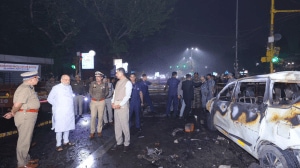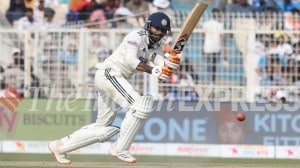Seven days at Cancun
Cancun is a beautiful seaside resort, with all the major international hotel chains registering their presence there. It also gets very, ver...

Cancun is a beautiful seaside resort, with all the major international hotel chains registering their presence there. It also gets very, very hot if you are under the sun and very, very cold inside the air-conditioned conference and hotel rooms!
We arrived at Cancun for the Fifth WTO Ministerial Conference on September 8 with modest expectations. There was a general realisation of the difficulties that lay ahead, both with regard to Agriculture and the Singapore Issues. The Indian delegation — comprising both government and industry — was housed at the Hotel Presidente Intercontinental, which became our headquarters. It had a media centre, a media briefing room, a large conference room, a separate breakfast area, as well as a secretariat room.
 There were many questions to begin with. Should it be one team or should we represent separate streams? Should the media be given full access? Will the government and industry teams converge? Will there be time for team consultations and interaction?
There were many questions to begin with. Should it be one team or should we represent separate streams? Should the media be given full access? Will the government and industry teams converge? Will there be time for team consultations and interaction?
All these questions were set to rest by the man who quickly emerged as the team captain: Union Commerce Minister Arun Jaitley. He followed a policy of open access, transparency, and the sharing of views. People were called in for consultations on strategy, as well as on specifics. Jaitley went to great lengths to make everyone feel comfortable and cared for. Perhaps no other national delegation at Cancun was as well-knit as the Indian team.
The first trial came quickly. The European Union launched a disinformation campaign on the Investment issue, with the express intention of dividing the house. An unsigned, undated paper was circulated among the delegates in order, apparently, to substantiate the disinformation. The move failed miserably.
It was good that it came early in the week. It made the Indians doubly alert and, apart from one or two players in the Indian team up to their usual games, the unity held. There was dialogue, yes. There was hard questioning, true. But finally truth and fact prevailed.
If Captain Arun Jaitley epitomised leadership, Vice Captain Dipak Chatterjee, commerce secretary, appeared unflappable, competent, and confident. He displayed faith in his team as he went about delegating detail and focusing on the broad issues.
Of the others there, S.N. Menon, additional secretary, Commerce, and Ambassador Chandrashekhar were jewels in the Indian crown. They worked like driven people, inspiring a great young team of experts as they went along.
This demonstrated that what has happened over the last few years is a miracle of sorts. There was a time when India’s trade policy team consisted of a few people, mostly inexperienced. Those days are gone forever. Now, we have a crack team with knowledge, application, expertise and negotiation skills. Over the next few years, one can see this team blossoming even further. Both the United States and the EU, as indeed a few other nations, have huge armies of staff and negotiators. By comparison, the numbers in the Indian team are small but the quality of the people who comprised it is impressive. This is a tribute to India Inc in operation.
But credit must also be given to the Indian media team of 22 for being a truly wonderful knowledgeable group — alert, engaging, active, aggressive and “all there”.
The industry team comprised four groups: the Automotive Component Manufacturers Association of India (ACMA), the Associated Chambers of Commerce and Industry of India (Assocham), the Confederation of Indian Industry (CII) and the Federation of the Indian Chambers of Commerce and Industry (FICCI). They all worked together in closed harness — learning and networking, especially when it came to interacting with the business teams of other countries. It was interesting to see the president of the US Chamber; the director general of the Confederation of British Industry; the secretary general of the International Chamber of Commerce, Paris; and the National Association of Manufacturers, USA, as well as several others trooping into Hotel Presidente Intercontinental to meet the Indian delegation.
So everyone was busy but not too busy. There was time to think, to talk, to network, to build teams. And the constant central figure, spending time and sharing concerns with everyone was Arun Jaitley. He arrived in Cancun on Day One. His first meeting rightly was with Robert Zoellick, US trade representative, followed by EU’s Pascal Lamy on the following day. He interacted with many others, including Alec Erwin of South Africa, and leaders from Brazil.
Jaitley’s manner made the difference. Even when he disagreed with his interlocutor, he took care not to give offence, choosing his words and tone with deliberation. He was instrumental in crafting two crucial alliances of 15 and 20 countries respectively. His style was like that of a catalyst rather than a leader anxious to come up front. He rightly gave prominence to Malaysia and Brazil, and stood behind them as a true statesman.
As we leave the shores of Cancun, a tribute to Murasoli Maran is in order. At Doha, during the Fourth WTO Ministerial Conference in November 2001, he stood alone as the fires raged around him. He faced up to huge pressures and gave a new confidence to India and the developing world.
We realise, of course, that there is a long way to go in trade negotiations. Many challenges lie ahead. India will have to learn more, work harder and retain the alliances crafted at Cancun. In all of this, Arun Jaitley will continue to have a crucial role. Cancun is the beginning of a new game.
With Cancun, one felt India has come nearer the centre stage but we’re not quite there yet. For that to happen, it would need to ensure that its economic growth stays at 7 per cent of GDP or more. Only then will it be able to climb on to centre stage and become an international investor and large trade player. That time, hopefully, is not too far off.
(The writer is director-general, Confederation of Indian Industry)































